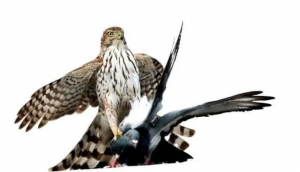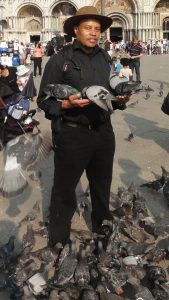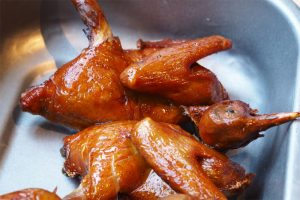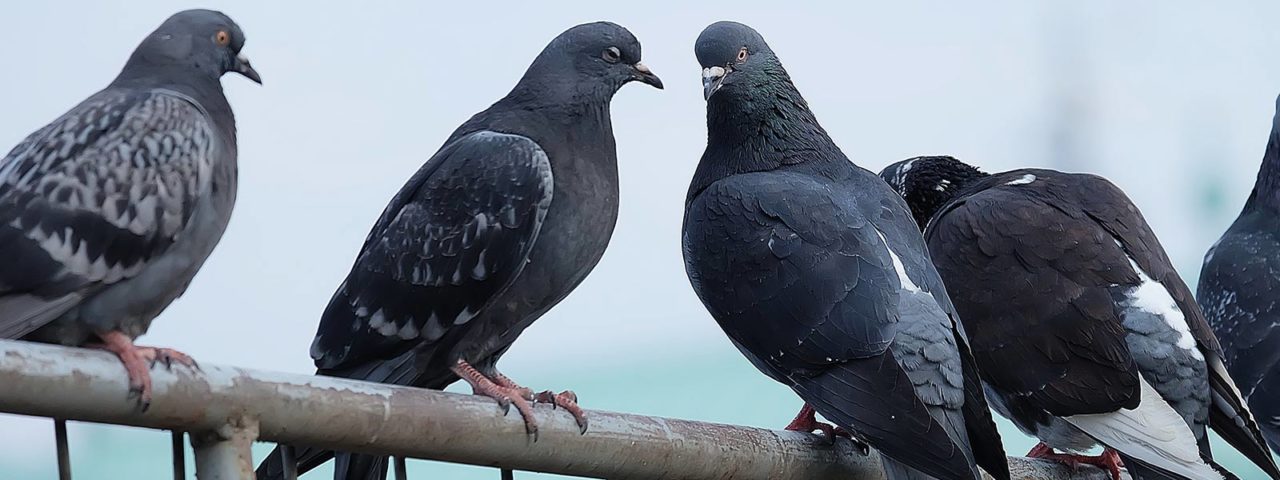Urban pigeons go wild after thousands of years of domestication
Pigeon is a bird family that is distributed worldwide with exception of the Sahara Desert, Antarctica and the high Arctic. Pigeons are considered as one of the most intelligent of bird species and the most physically adept creatures in the animal kingdom. The bird has a stout body, small head, rather short legs, broad pointed wings, and smooth and compact plumage decorated with varieties of colors. The pigeons are generally monogamous and often mated for life to give two squabs per each brood. Both parents care for the young’s and they protect their nest fiercely. Currently, there are several breeds of pigeons, including many fancier breeds around the world are kept as pets.
The common domestic pigeons are subspecies that were derived from the wild rock dove, which was naturally inhabited to sea-cliffs and mountain caves. The Rock Dove nesting typically on cliff ledges and at the entrance to large caves. This habit would have brought them into close contact with cave-dwelling humans, a relationship usually linked to the development of dwellings in the Neolithic time that started during the last Ice Age. In this era, humans began cultivating plants, breeding animals for food and forming permanent settlements. The advent of agriculture separated Neolithic people from their Paleolithic ancestors.
The rock pigeon is the world’s oldest domesticated bird, documented for more than 10,000 years, as mentioned in the Mesopotamian cuneiform tablets of Egyptian hieroglyphics. It is unclear where exactly rock doves were domesticated; it was probably multiple domestications in the Middle East and/or North Africa and in the earliest permanent human settlements of Southern Europe and Western Asia. The earliest written records suggest that pigeons have been the constant companions of humankind in many scenarios. The pigeon appeared in the scripture of Noah the prophet and messenger of God, on the subject of Noah’s Ark and the flood through an oral Torah and written Torah in the Holly books in Quran 7 & 11, Baha’i pg. 60 and the bible in Genesis 7. Pigeon sent out at Ararat mountains to see if the water had receded from the surface of the earth after the storm’s long duration.

Pigeon brought back an olive branch in Noah’s Ark
Pigeons are significantly important to mankind and the ecosystem. They are needed mostly in the food chain of different animals, including humans and other predator birds across the globe. However, since ancient times, pigeons have been used to symbolize peace, purity and fertility. Using magnetoreception, a pigeon has an extraordinary homing ability that can efficiently navigate its way back home over extremely long distances. This remarkable capacity extends to over 2000 kilometers, which have been recorded in competitive pigeon racing. Its homing ability was also recorded during Noah’s time, when released from the Ark by bringing back an olive branch that signified good hope of a life outside. By 3000 BC, Egypt was using homing pigeons for delivering messages as official Postman (pigeon post). Messages or small parcels were then tied around the legs or wings of the pigeon, which was freed far away from home and could reach its original nest or home for delivery. By the 19th century, homing pigeons were used extensively for military communications. Unfortunately, with this homing ability, sometimes pigeons have been misused for the illegal trafficking of drugs.

Pigeons are the prey of other predator birds
Pigeon eats varieties of seeds and fruits of different plants, which in turn help to disperse seeds in different places that contribute to global biodiversity. Pigeons have been used for saving human lives on water bodies from their better eyesight. A team of navy researchers trains them to save lives at sea with an excellent success rate. A Project Sea Hunt trained a few pigeons to identify between yellow and red jackets when flying above the water. They proficiently spot the survivors during search operations.
Currently, numerous varieties of the rock dove exist in domestication and in the feral state in cities and towns throughout most parts of the world. The Feral Pigeon is the bird species that is most associated with humans and adapted to urban life on all continents but Antarctica. Pigeons are feral, exotic and invasive and even downright filthy. Escaped domestic pigeons claimed to have increased the populations of feral pigeons worldwide. The pigeon’s remarkable ability to live in human environments, especially the cityscape, can be considered as a key species in urban ecology. Buildings in cities closely resemble cliffs and pose a synthetic habitat for pigeons. This bird finds window ledges, rooftops, bridges, vacant buildings and warehouses to be ideal substitutes for the natural ledges in cliff sides that they have always used as roosting, nesting, and sheltering sites. These causes huge increases of feral pigeons in the cities.
Humans did not consider pigeons to be a nuisance until the twentieth century. Pigeon abundance is positively correlated with human density. Because of the increase in human abundance and activity, pigeons’ ability to exploit many available opportunities combined with low predation risks caused an accelerated growth in the feral pigeon population. Cities provide various resources for pigeons, from food, nesting and roosting locations. On the other hand, feral pigeons help to clean up food wastes that humans discard in town and city streets. In some cities, feral pigeons control the growth of invasive weeds, as a natural control. Pigeons normally eat things like thistles in very large quantities, by ripping them out of the ground and preventing them from overgrowing. Thistles are classed as noxious weeds, and the service that pigeons provide prevents them from becoming the dominant plant in any flora area.
Feral pigeons have other major roles in the cycling of nutrients and minerals, which contributes to shaping the urban habitat where they are found. They also contribute to trophic levels as primary consumers and prey for urban raptors. Feral pigeons eat a variety of foods, including grains, seeds, cereal crops, plant seeds and peas. They will also feast on berries, fruits and vegetables, and house or hotel leftovers. Urban pigeons will happily munch on breadcrumbs, popcorn, biscuits, chips, rice, pasta, fish and pet food and anything humans leave behind. They are generally herbivores but they will eat insects, snails and worms when needed.
Morphologically, it is impossible to distinguish today between feral Pigeons and the wild ancestor, so its natural geographical range cannot be determined. Over the past century, pigeons have become almost synonymous with urban living. Feral pigeons as are so successful that they have even begun encroaching on wild rock dove populations. Wild rock doves have interbred so much with their feral cousin that there may be no truly wild rock doves left in time. A species becoming both ubiquitous and abundant, as it constantly existed in nearly all urban and wild environments. In another part of the world, this bird occupies an ambiguous status between domesticated and wild animals, since urban pigeons are the feral descendants of formerly domesticated birds. People now refer to these pigeons as pests or “rats with wings” since their most persistent vandals and littering.
Feral pigeons are highly adapted to urban environments and are thus often abundant in cities. These lead to various problems and become a nuisance, especially around roosting sites. They can potentially destroy buildings and other properties. For example, the transmission of allergens, pathogenic micro-organisms, unpleasant odours and infestations of ectoparasites can be derived from breeding sites. Their acidic feces corroded gutters and other metal structures, erode stone buildings, and burn lawns. Pigeons are sometimes referred to as “rats with wings” because they are also carriers of diseases and viruses. Pigeon droppings are also known to harbor a variety of diseases and parasites, and large accumulations may present a human health hazard. Pigeons can make a bit of a mess when pooping on people and piles of droppings on pavements.

Despite their bad reputation, it has been noted that urban encounters with pigeons “are profoundly social.” These birds are attractive creatures and beautiful to watch. Feral Pigeons are associated with big cities that have often become tourist attractions. Just watching pigeons flying or eating can have a positive impact on mental health. Most people preferred to watch and feed them for leisure as their source of stress relievers and mind calmness. Feral pigeons are a great source to spend time, which may help old people improve their quality of time. This also helps old people to build activity and push them to move around as exercise. The medical community recognizes feeding pigeons as an excellent source of relaxation and mental peace.
Feral pigeon flocks are found to increase in numbers and dominate the urban landscape due to the availability of food, fresh water and sources of breeding sites. Pigeons are ground-feeding birds and prefer to take their food from the floor. A plentiful food supply encourages year-round breeding; therefore, removing the food source will result in less breeding and encourage the pigeons to move to another location. Depriving pigeons of their favored foodstuff is one way to ensure they must go elsewhere to survive. The flock will gradually disperse until the remaining number of birds matches what the area can naturally support. This is the most successful long-term measure for controlling an area’s absolute number of pigeons. During the Second World War, food availability reduction dramatically reduced the number of pigeons despite of the increase in suitable nesting and roosting sites.
Controlling pigeons on the exterior surfaces of buildings often requires considerably more effort and humane methods. The most effective and permanent methods of control involve structural modifications which either physically exclude pigeons from the preferred surface or make it difficult for the birds to rest comfortably on the exposed building surfaces. Physical exclusion can be accomplished by installing weather resistant netting, wire screening, sheet metal, or other materials in a manner that will restrict access to the roosting sites. The use of sticky substances and chemical repellents that can be applied to the roosting area can discourage pigeons from roosting. Scare devices such as audio or visual deterrents can discourage pigeons from roosting or nesting. In addition, electric shock bird control systems are available for repelling many species of birds, including pigeons. Other methods like poisoning, shooting and trapping, have been used to kill these feral pigeons to reduce their numbers.
Until agricultural advances in quite recent times, a dovecote, rabbit warren and carp pond were the three essentials to provide fresh meat in most parts of the world throughout the year. Although pigeons were first domesticated as a source of food, the later spread of the chicken diminished their importance and thus most domestication traits present in modern birds were explicitly selected for exhibition as fancier breeds, or to improve racing speed and homing ability. Pigeon flesh belongs to a white meat family. The texture of pigeon meat is tender and delicious, and the nutritional value is indeed high with good quality protein.
 Fried pigeon meat
Fried pigeon meat
Pigeon meat also contains a variety of fat water-soluble vitamins such as vitamin A, vitamin E, B vitamins and vitamin D, and trace elements such as iron, zinc, selenium, and copper. It is also rich in minerals such as sodium, potassium, magnesium, and calcium. Apart from nutrients, there are innumerable advantages of eating pigeon’s meat as it reduces the risk of muscle pain, heart disease, Rheumatoid arthritis and depression. Prolactin, the hormone responsible for milk production in mammals, was first isolated in pigeons in 1933. The same hormone stimulates the male and female birds to secrete milk from their crops to feed their young. In China, pigeons represent longevity and fidelity. Pigeons used to be valued medicinally as well, and it was believed that their meat could cure diseases like plagues and palsies. There are many ways to eat it, and it can be used for soup, roasting, frying, frying, steaming or congee, etc. It is suitable for all ages.
The fate of feral pigeons is very sad as many cities are expelled and reduce their number by killing them by poisoning, trappings, and shooting for disposal. They are abandoned and dismissed close to humans, which forced them to go into the wild. Yet with other advantages, pigeons can save human populations and other animals as a good source of nutrients. However, pigeon offers untapped research opportunities. Though not a true wildlife species, compared with other free-roaming animals, pigeons are often close at hand, easy to access and capture and require minimal permits to handle. The pigeon provides opportunities to learn and experiment with a range of methods pertaining to population dynamics, animal behavior, ecological interactions, and basic study design. Let’s find the best ways to control and use this bird for several available benefits.
From the Department of Animal, Aquaculture, and Range Sciences in the College of Agriculture, SUA, Morogoro, Tanzania.
Published in SUA Convocation Newsletter, pg. 13 – 17. Volume 25 | November 2022
Share this page

